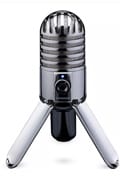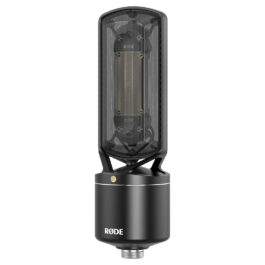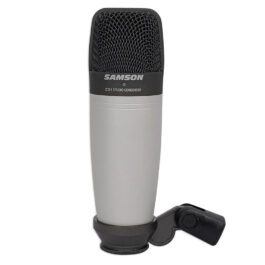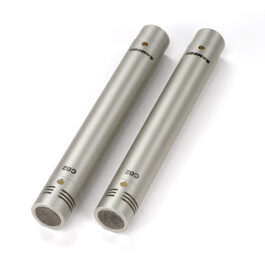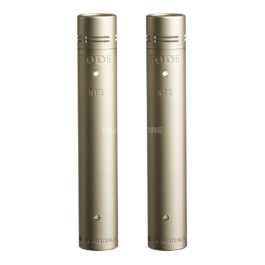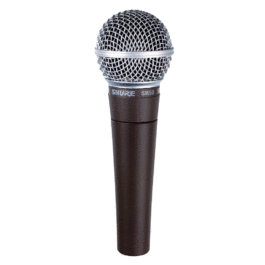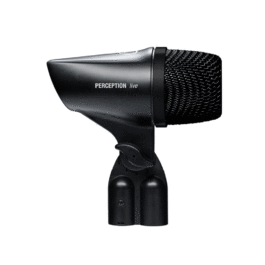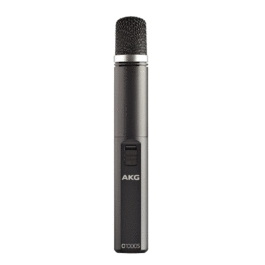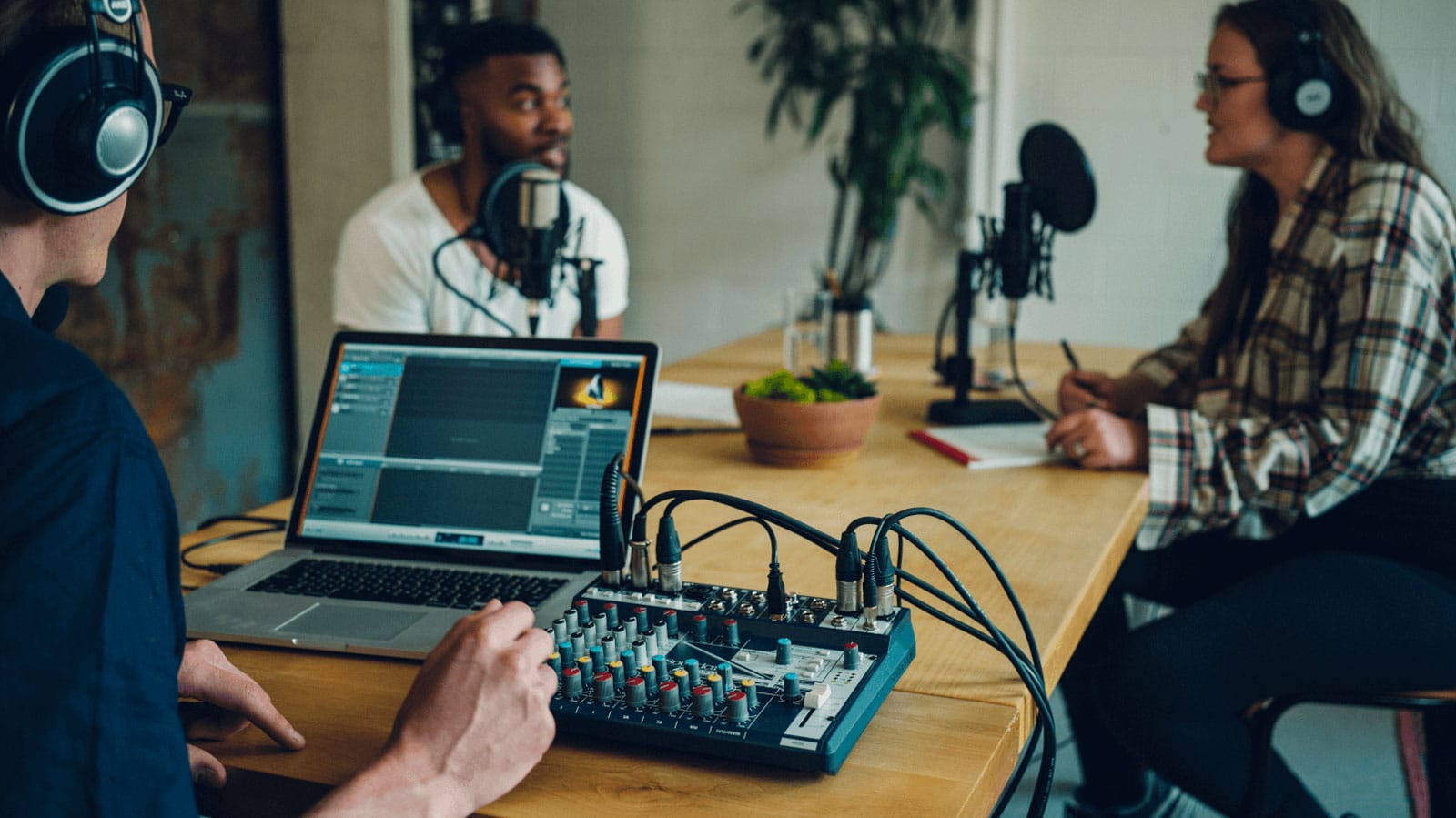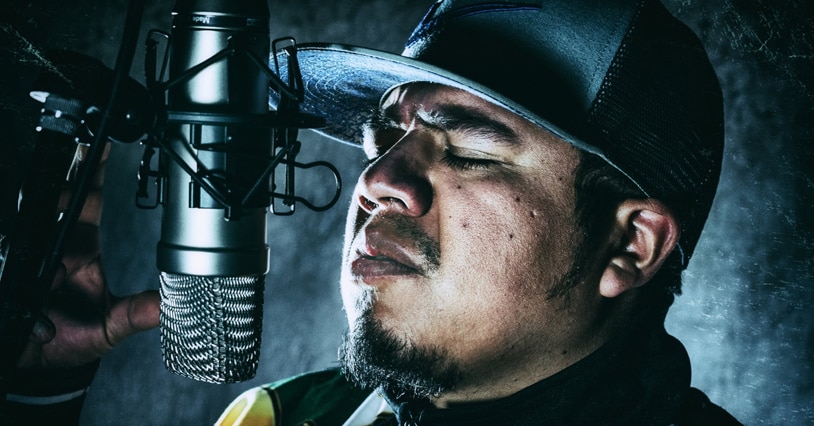
If you’re serious about getting world-class recordings, then there is, unfortunately, no one-size-fits-all microphone. You will need a selection of vocal microphones, instruments microphones, and even a few ambient microphones.
If this sounds daunting, don’t worry, you’re not alone. The purpose of this guide is to empower you to take your studio recording to the next level.
We will cover:
- The most common types of microphone
- The ideal microphone for the job
- 10 Most popular studio microphones
The Most Common Microphone Types
Different mics use different capsule designs and pick up sound in different ways. That is why it always pays to use the right mic for the job.
If you want to record vocals, get a vocal mic. For acoustic guitars or other acoustic instruments (that don’t have a pickup built in) get a good quality condenser mic. For drums, buy a drum kit mic set. Remember, to get the best sound from the drums, each drum and cymbal would ideally have its own mic.
Condenser Microphones
Best for: Vocals, Guitars and High-Frequency Instruments
In an ideal world, you will have a wide selection of microphones when recording. If you are however facing budget restraints and were forced to choose only one type of microphone, you can’t go wrong with a condenser microphone.
Condenser microphones are also known as capacitor microphones. Most studio engineers prefer condenser mics because of their detail and accuracy.
Condenser mics are constructed with a lightweight diaphragm which is suspended by a fixed plate. Sound waves cause pressure against the diaphragm, which causes it to move.
Because of the thin diaphragm, condenser mics are used to pick up delicate sounds. They also need a power source. For live use, most people will use a 9v battery or phantom power, but for studio recording, there is no reason to not use phantom power.
While condenser mics are great for capturing acoustic guitars, they don’t work well for big booming sounds. If you want to mic up a singer with a powerful voice, or any big booming sound, your best option is a dynamic microphone.
Dynamic Microphones
Best for: Higher Volume Instruments like Brass and Kick Drums.
Dynamic microphones are able to handle louder, less predictable sounds and volumes which makes them ideal for live use. That doesn’t mean that there isn’t room in your studio for a dynamic microphone.
If you’re recording brass instruments or a kick-drum, the pressure from the air of the instrument you’re playing could damage your condenser microphone. In these situations, you ideally want a “bullet-proof” mic that can handle the pressure. When it comes to sheer ruggedness, nothing comes close to a dynamic microphone.
Another added advantage of dynamic microphones is their price point; they are usually much more affordable than condenser microphones.
A dynamic mic requires little to no maintenance, and if you practice a reasonable level of care, it will maintain its performance for a lifetime.
Read more about the technical differences between condenser microphones and dynamic microphones.
The Ideal Microphone for the Job
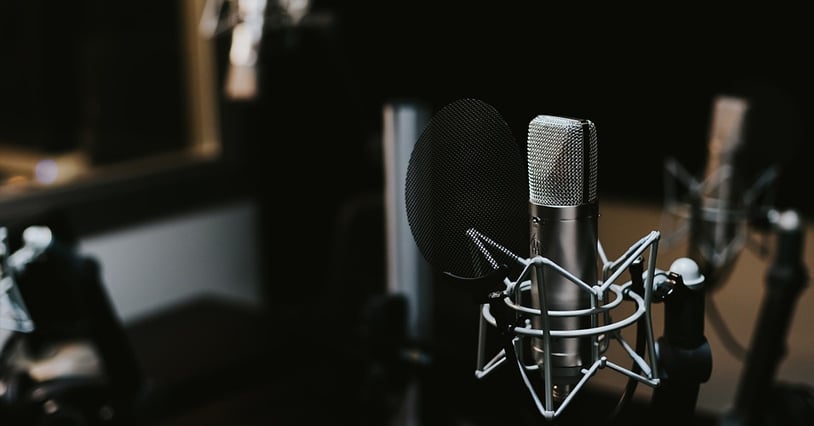
Like with any tool, it’s imperative that you use the right tool for the job. Sure, a builder could build an entire house using nothing but a hammer, but would you trust living in that house? And how much longer do you think it would take to build that house?
So you’ve decided to buy a condenser mic. Awesome. Your next step is to head to your closest music store and buy the first studio-quality condenser microphone you see, right?
Well, no. There’s a little more to it than that.
While most microphones are either dynamic or condenser microphones, there are sub-categories of mic that will help you narrow down your choice.
- Large Diaphragm Condenser Mics
- Small Diaphragm Condenser Mics
- Dynamic Mics
- Bass Mics
- Ribbon Mics
- Multi-Pattern Mics
- USB Mics
- Boundary Mics
- Shotgun Mics
Large Diaphragm Condenser Mics
Your ideal first studio microphone. While not suitable for all situations, a Large Diaphragm Condenser Mic is your most versatile option and should be your go-to vocal recording microphone.
Small Diaphragm Condenser Mics
These are most commonly called “pencil mics”, and are best used to record high-frequency and delicate sounds like cymbals, guitars, violins and so on.
Dynamic Mics
Because of the punishment that a dynamic microphone can take, they are the ideal recording solution for electric guitar, rock/metal, drums, and harsh vocals.
Bass Mics
To accurately capture the tone of a bass guitar or drum, you ideally want a purpose-built microphone. Nothing will give you better low-end tone, or scoop the mids as well as a bass microphone.
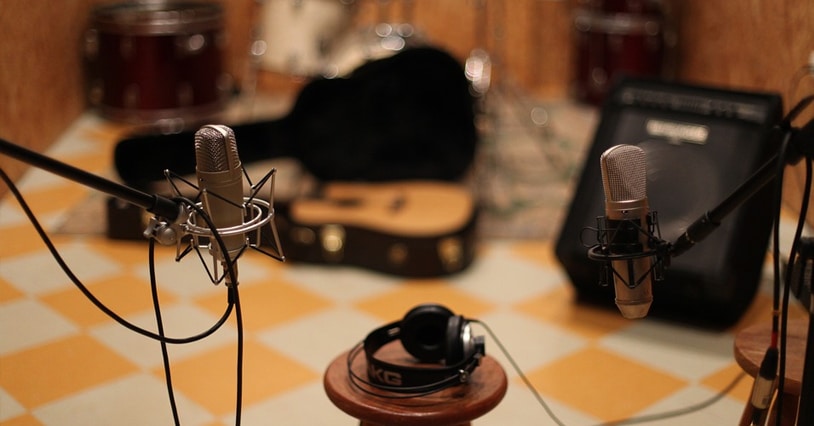
Ribbon Mics
Ribbon mics are neither dynamic nor are they condenser. They are a design all unto themselves.
Ribbon mics are known for three things; crystal clarity, a high price tag, and being fragile. Ribbon microphones were the preferred microphone for radio, but have fallen out of favour because of how vulnerable they are. If you want a vintage tone and don’t mind the price tag, a ribbon microphone should be your go-to choice.
Multi-Pattern Mics
Multi-pattern microphones are the “swiss-army-knife” of microphones. A multi-pattern microphone will allow you to choose between a cardioid, omnidirectional, and figure-8 polar pattern. Best used when you need a large diaphragm microphone with a few more tonal options.
USB Mics
USB Microphones are not likely to be found in most professional studio environments, but they are a favourite mic choice for home recording. With a USB microphone, you don’t need a sound card or audio interface, making them the easiest entry point.
If you do voice-over work or run a podcast, a USB microphone could be your ideal solution.
Boundary Mics
Boundary microphones are seldom found in home studios. Boundary mics, as their name suggests, are usually placed on boundary surfaces like walls, or the floor in the corner of a room. These are most commonly used to mic up kick drums or to record the ambient sound of a room.
Shotgun Mics
Shotgun mics are seldom used in the studio, but then again not all recording happens in a studio. If you’re recording on location for a music video, or an interview, a shotgun mic is your best friend. Shotgun mics are best known for their ability to isolate sound and are great for noisy environments.
10 Most Popular Studio Microphones
Sonically, the NTR is capable of reproducing unprecedented high-frequency detail and accuracy, addressing common criticisms of other ribbon microphones, while opening up the possible usage scenarios considerably. This allows it to record sound sources that usually require a more sensitive microphone element.
Buy Studio Mics Online
-
Request Stock
- Out of Stock
- Studio & Recording, Recording Microphones
Rode NTR Active Ribbon Microphone
-
R18,550R15,695FREE DELIVERY - Select options
-
-
- Studio & Recording, Recording Microphones
Samson C01 Condenser Microphone
-
R2,595R1,549FREE DELIVERY - Select options
-
Request Stock
- Out of Stock
- Recording Microphones, Studio & Recording
Rode NT1-A Studio Condenser Microphone with Pop Filter
-
R6,995R5,595FREE DELIVERY - Select options
-
-
Request Stock
- Out of Stock
- Studio & Recording, Recording Microphones
Samson C02C Single Condenser Microphone
-
R2,295R1,605FREE DELIVERY - Select options
-
-
Request Stock
- Out of Stock
- Studio & Recording, Recording Microphones
Samson Meteor Mic USB Microphone
-
R2,170R1,497FREE DELIVERY - Select options
-
-
- Live Sound, Microphones, Studio & Recording
Rode NT5 (Pair) Microphones
-
R10,895R8,715FREE DELIVERY - Select options
-
- Live Sound, Microphones
Shure SM58 Vocal Microphone
-
R2,999R2,779FREE DELIVERY - Select options
-
Request Stock
- Out of Stock
- Live Sound, Microphones
AKG P2 Dynamic Bass Drum Microphone
-
R2,399R1,920FREE DELIVERY - Select options
-
-
Request Stock
- Out of Stock
- Live Sound, Microphones, Studio & Recording, Recording Microphones
AKG C1000 S Mk4 Small-diaphragm Condenser Microphone
-
R5,995R4,195FREE DELIVERY - Select options
-
-
- Recording Microphones, Studio & Recording
AKG P220 Large Diaphragm Condenser Microphone
-
R6,295R4,720FREE DELIVERY - Select options










